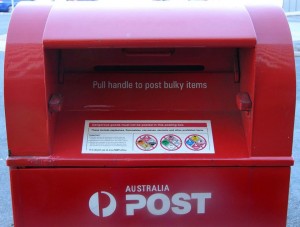Buying books to sell online is a very exciting process. I seriously enjoy the buying of books and can wax lyrical for days about the joys of going op shopping or putting together a box or more of books at a book fair, but this is only a part of the process.
Once I have my books it is time for some serious work. The first step is to clean them up by removing pencil marks and stickers, I don’t remove library stickers unless they’re already starting to come off. Then comes the need to remove any sticky left from the stickers and there’s a whole armoury involved in the processes of removing pencil marks and sticky from stickers which I won’t deal with now. This blog will deal with the precise mathematical formula for pricing pre-loved books for selling online.
 I’ll do a random book from my pile so you can then look at the listing on my website afterwards. In this case, the book is Catweazle by Richard Carpenter. A lovely little book, it’s the novelisation of the series screened in the UK on ITV in the 1970s and also in Australia. I recall it well from my childhood and so when I saw the book I just had to pick it up to sell, the fact that they had a price of 30c on it and there is very little wear may have had something to do with it. A book like this I will normally google so I can look up the background to get some idea of the popularity of the book, see how many were written, when they were first published and any other related or unrelated information that I can find. So, my google search finds a fan website which indicates a possible fan base looking for Catweazle paraphenalia and also a Wikipedia page. It’s also useful if you’re able to read every scrap of newspaper you can in case there are related articles hanging around. My DD just saw the book and told me about an article she read recently in the Herald Sun Supplement. It’s about fashion and she tells me the way Catweazle was dressed is currently the height of fashion, it probably cost about 11 pounds to dress him in the 1970s and would now cost about 200 pounds. All these things can help or hinder.
I’ll do a random book from my pile so you can then look at the listing on my website afterwards. In this case, the book is Catweazle by Richard Carpenter. A lovely little book, it’s the novelisation of the series screened in the UK on ITV in the 1970s and also in Australia. I recall it well from my childhood and so when I saw the book I just had to pick it up to sell, the fact that they had a price of 30c on it and there is very little wear may have had something to do with it. A book like this I will normally google so I can look up the background to get some idea of the popularity of the book, see how many were written, when they were first published and any other related or unrelated information that I can find. So, my google search finds a fan website which indicates a possible fan base looking for Catweazle paraphenalia and also a Wikipedia page. It’s also useful if you’re able to read every scrap of newspaper you can in case there are related articles hanging around. My DD just saw the book and told me about an article she read recently in the Herald Sun Supplement. It’s about fashion and she tells me the way Catweazle was dressed is currently the height of fashion, it probably cost about 11 pounds to dress him in the 1970s and would now cost about 200 pounds. All these things can help or hinder.



